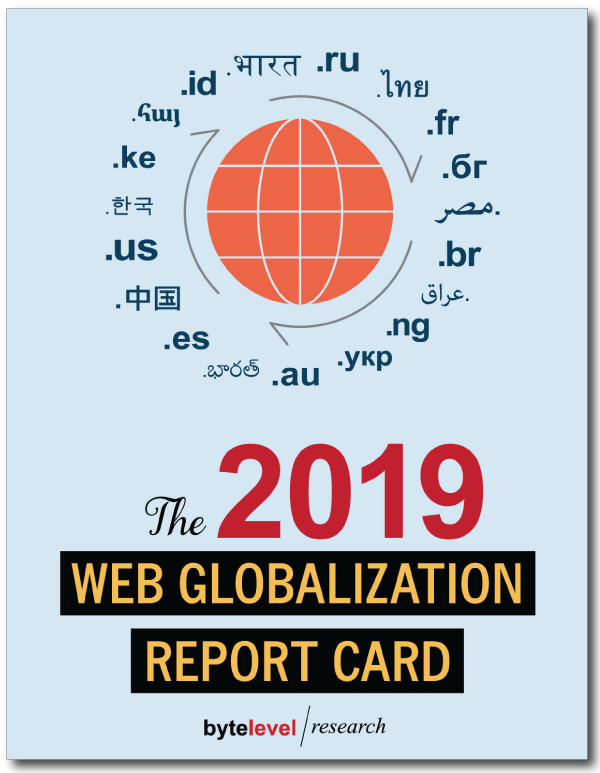A little more than 15 years ago, I began benchmarking websites for a new report I had in mind, tentatively titled the Web Globalization Report Card. The number one website in the first Report Card was a startup company by the name of Google. Its search interface supported 50 languages, in large part due to volunteer translation. But most other websites I studied back then supported fewer than 10 languages.
We’ve come a long way. Among the leading global brands, 30 languages is just “average.” Most of the websites in the top 25 list passed 30 languages quite a while ago, such as the world’s dictionary, Wikipedia. I rely on this resource at least once a week, and many millions of others do as well. The website is austerely designed, mobile friendly, and supports more than 280 languages. And because Wikipedia reflects the investment in time and resources of its community, that language total is all the more impressive and a reminder that, when it comes to taking content and websites global, we’re only just getting started.

Joining Wikipedia on the list of the top 25 websites are regulars such as Google, Cisco, Deloitte NIVEA, Adobe, and Philips. New to the list this year are Uber, Volvo, and Emirates.
The teams behind the websites featured in the top 25 all deserve a round of virtual applause. Because I know acutely well how difficult it can be to build the case for supporting languages — and how one must continually battle to support usability for all users, not just those who speak the dominant languages of the executive team.
A few key findings
- Actions speak louder than words. Despite all the talk of walls and Brexit, companies continue to expand their global reach. The average number of languages supported by the leading global brands is now 32 languages—more than double the number of languages from a decade ago.
- There’s a good reason Google ran an ad for Google Translate during the Super Bowl.The internet may connect computers but language connects people. Google Translate supports more than 100 languages—and acts as a linguistic “front end” for many websites.
- Uber is on a language-expansion streak. It added 11 languages over the past two years—and now supports 46 languages.
- Volvo finished as the highest-scoring automotive website.
Congrats to everyone on the list — and stay tuned for more announcements in the weeks ahead.

The 2019 Web Globalization Report Card
